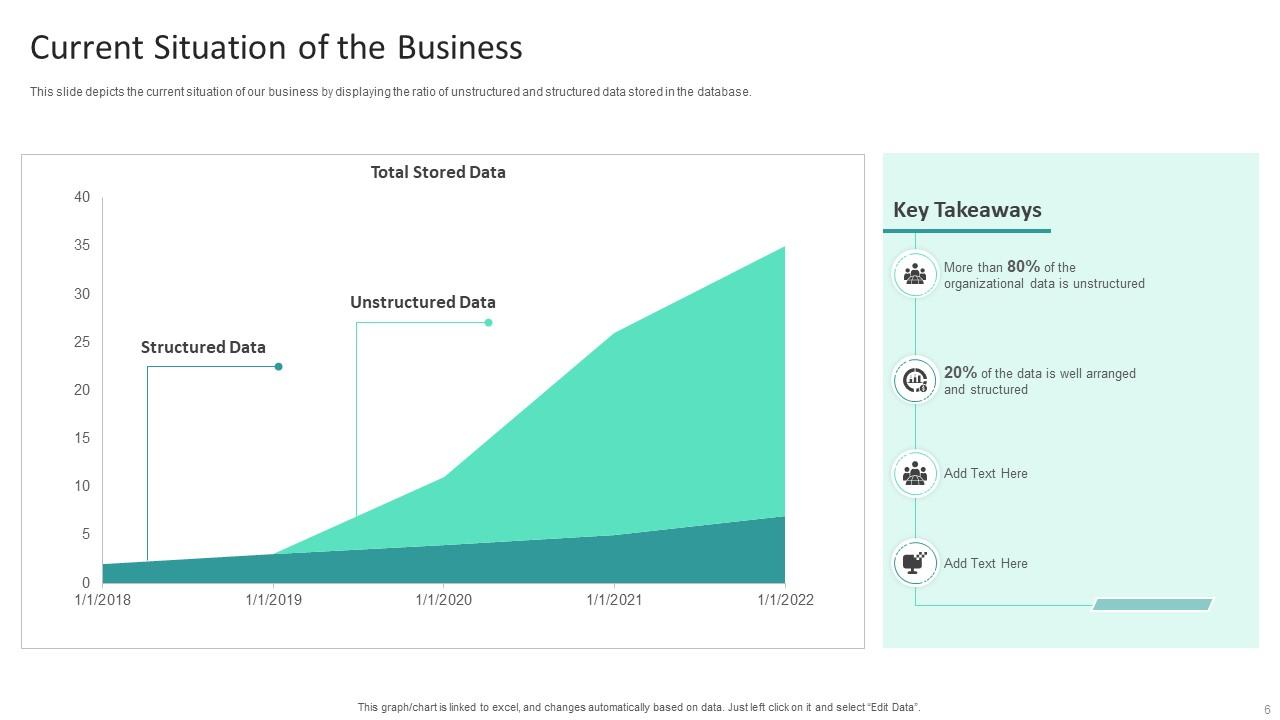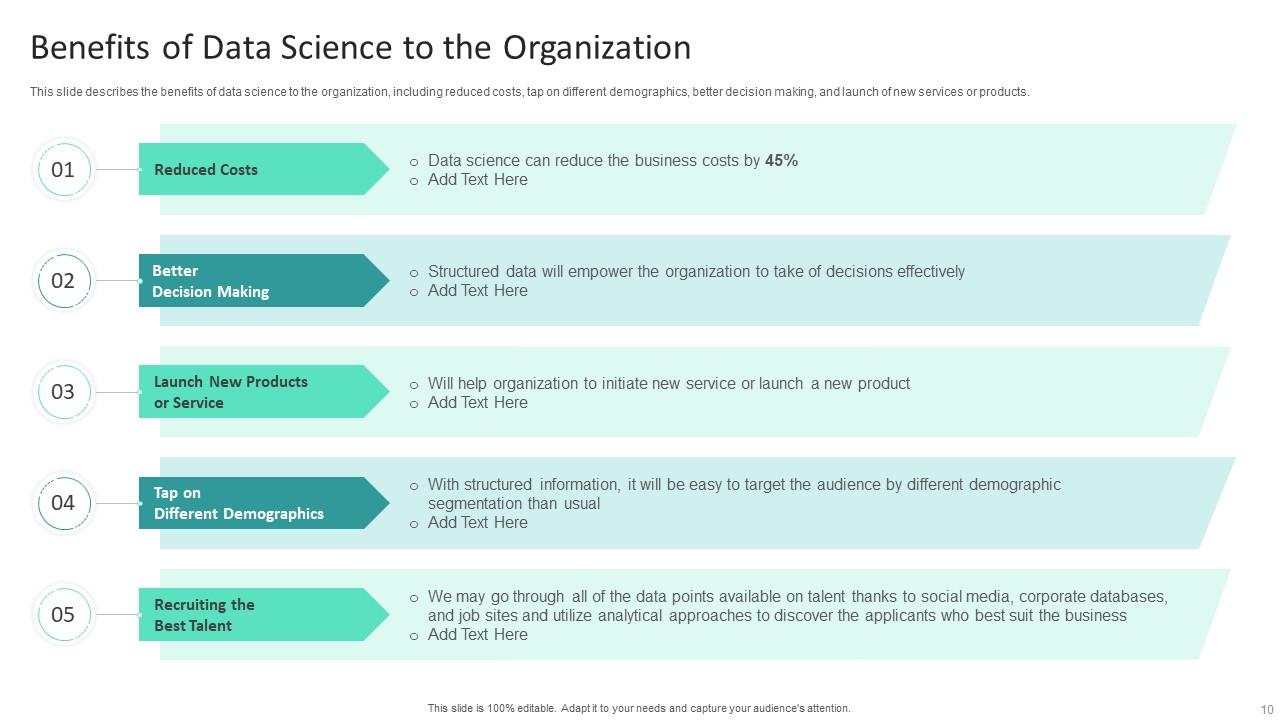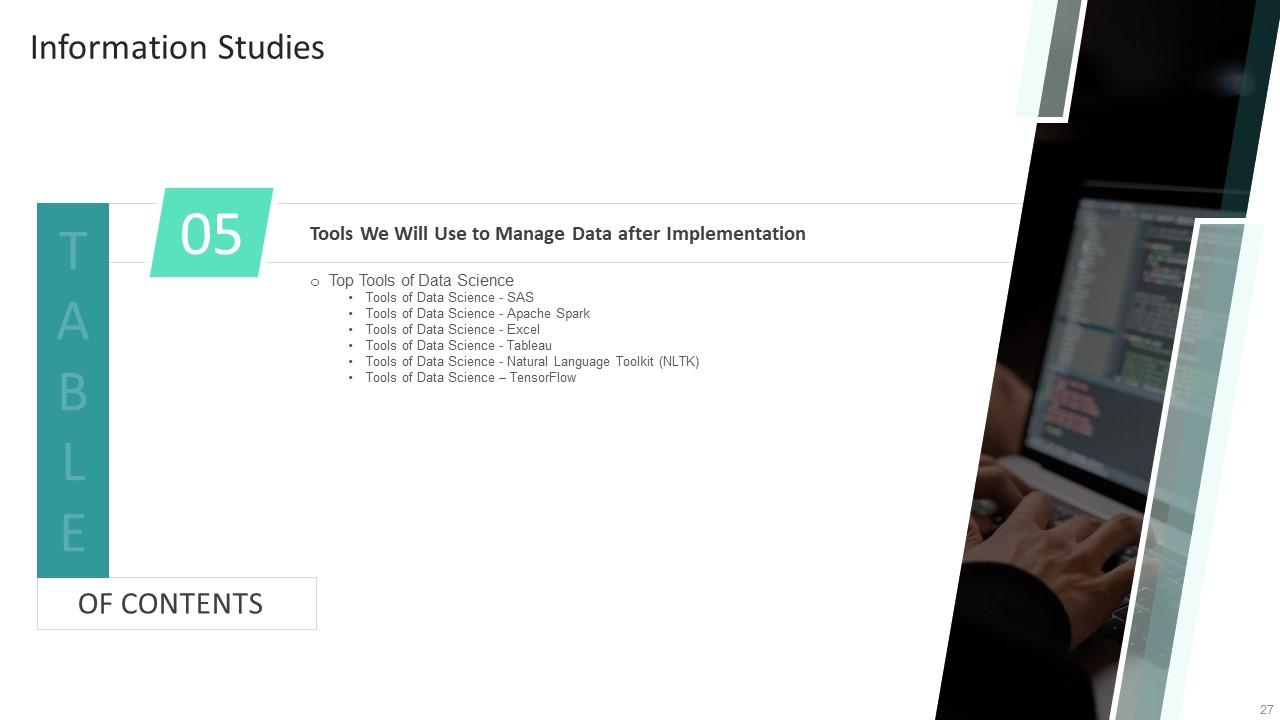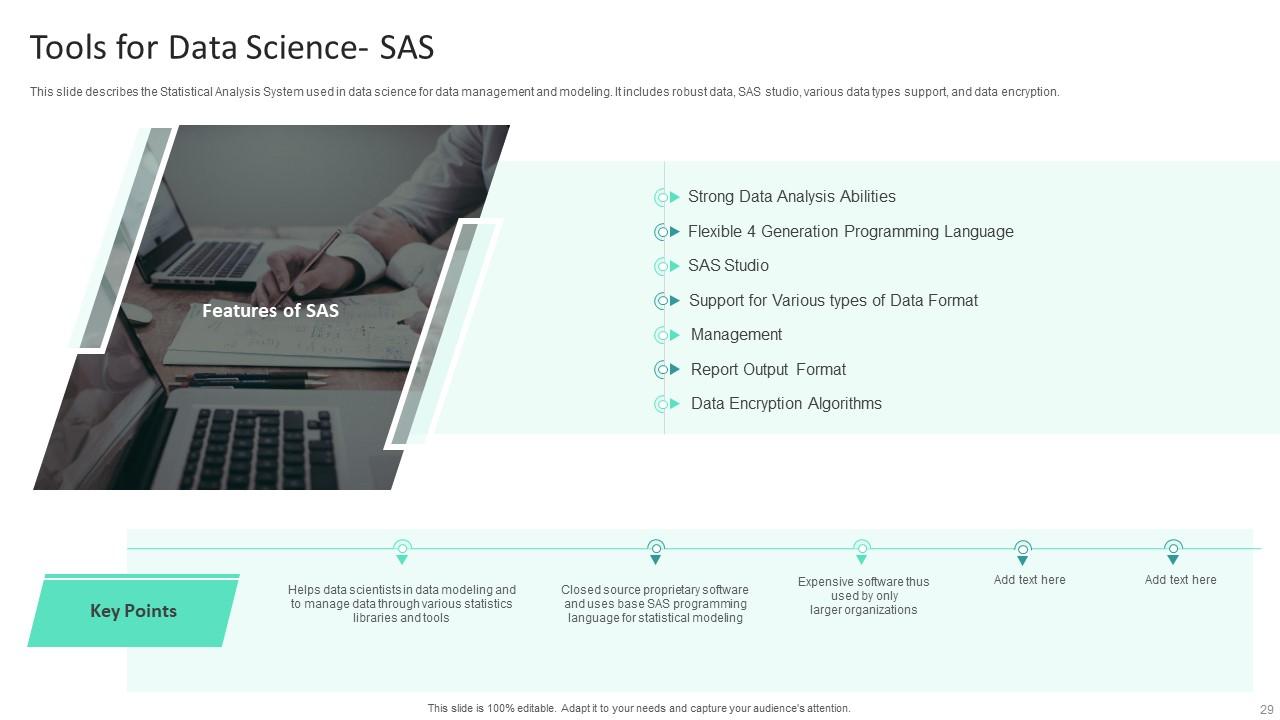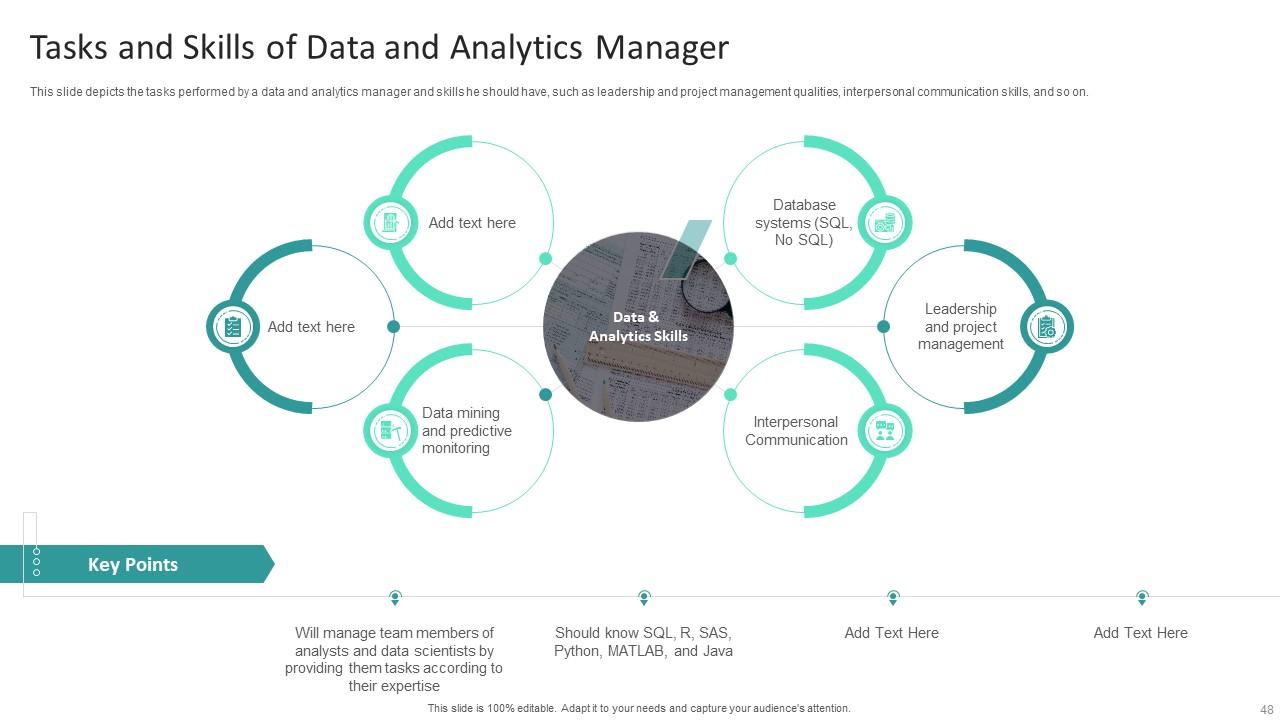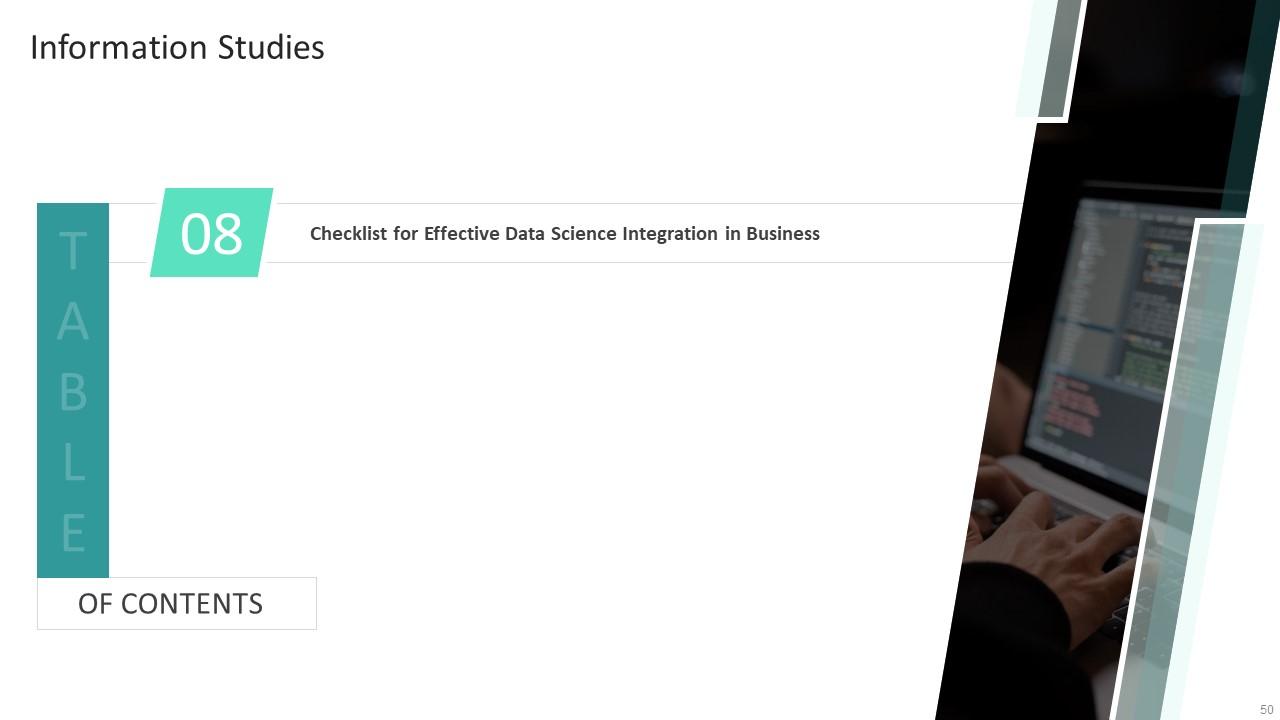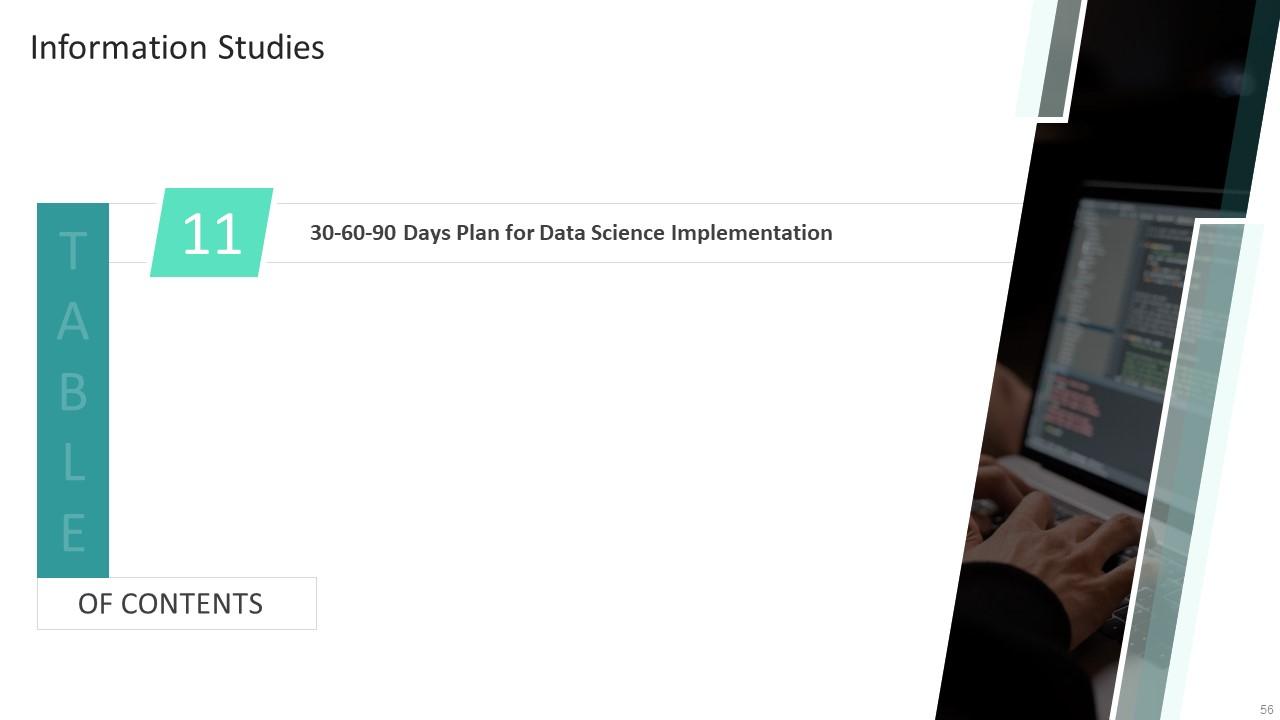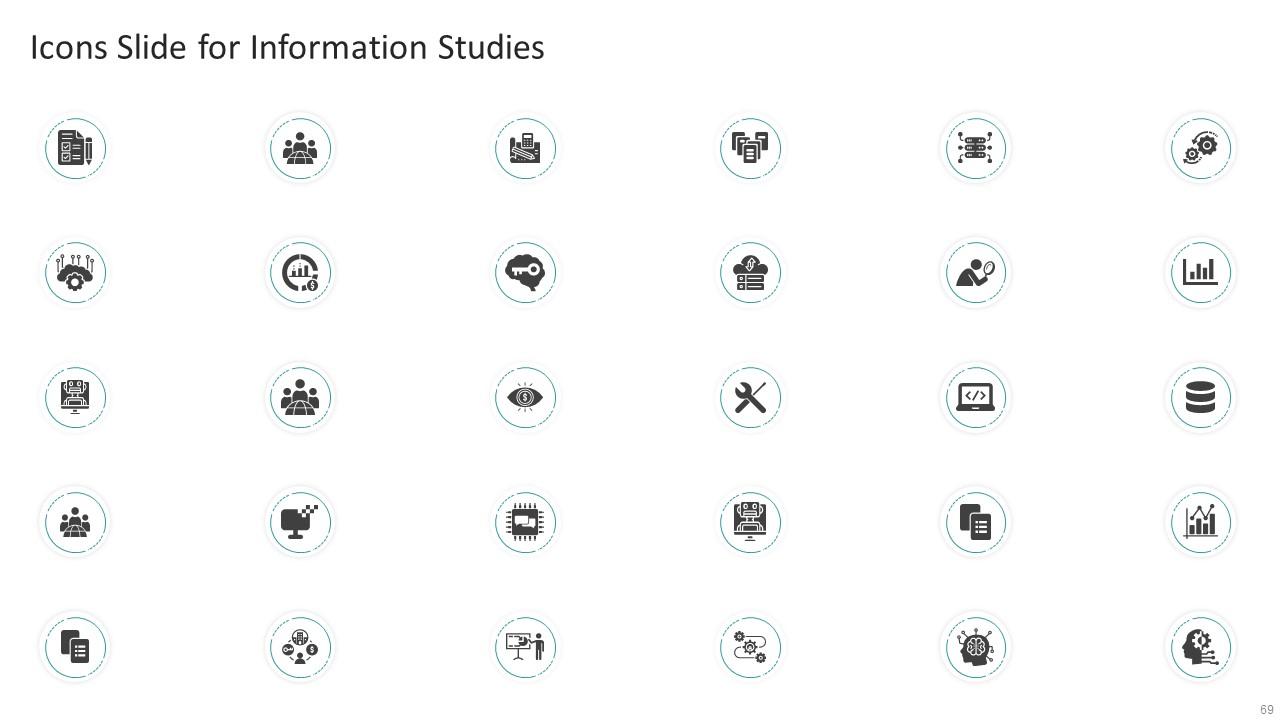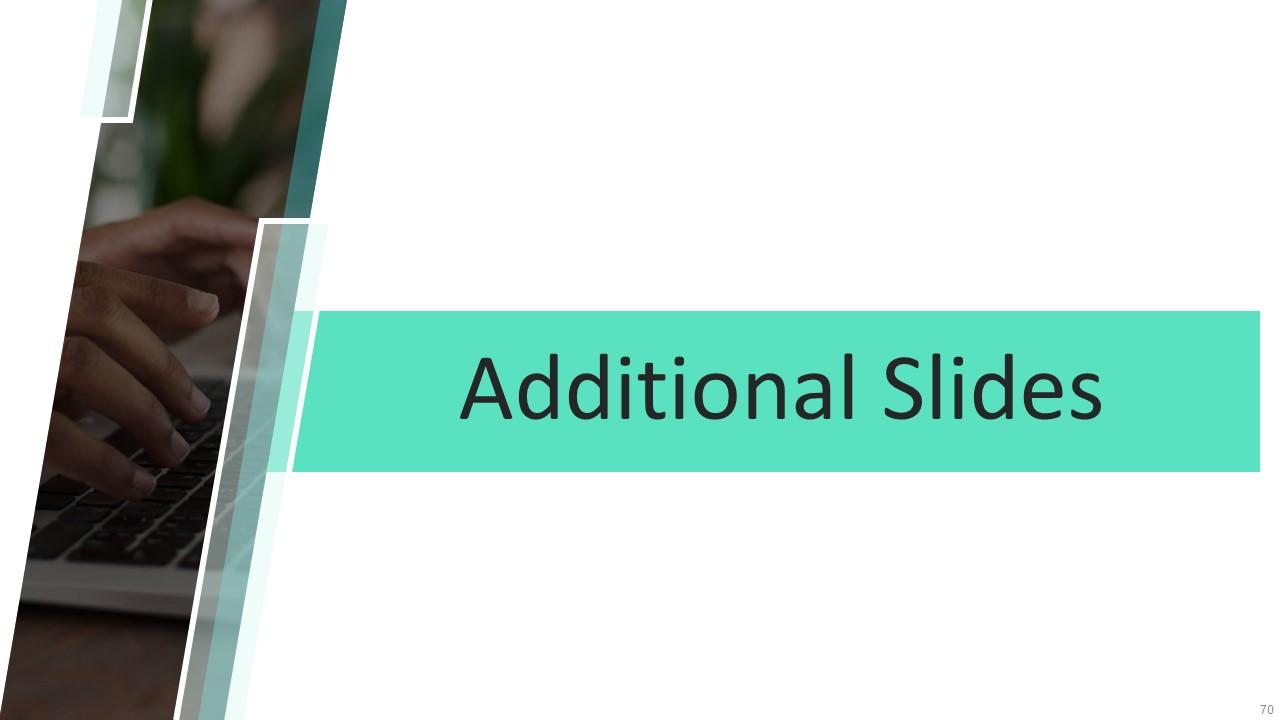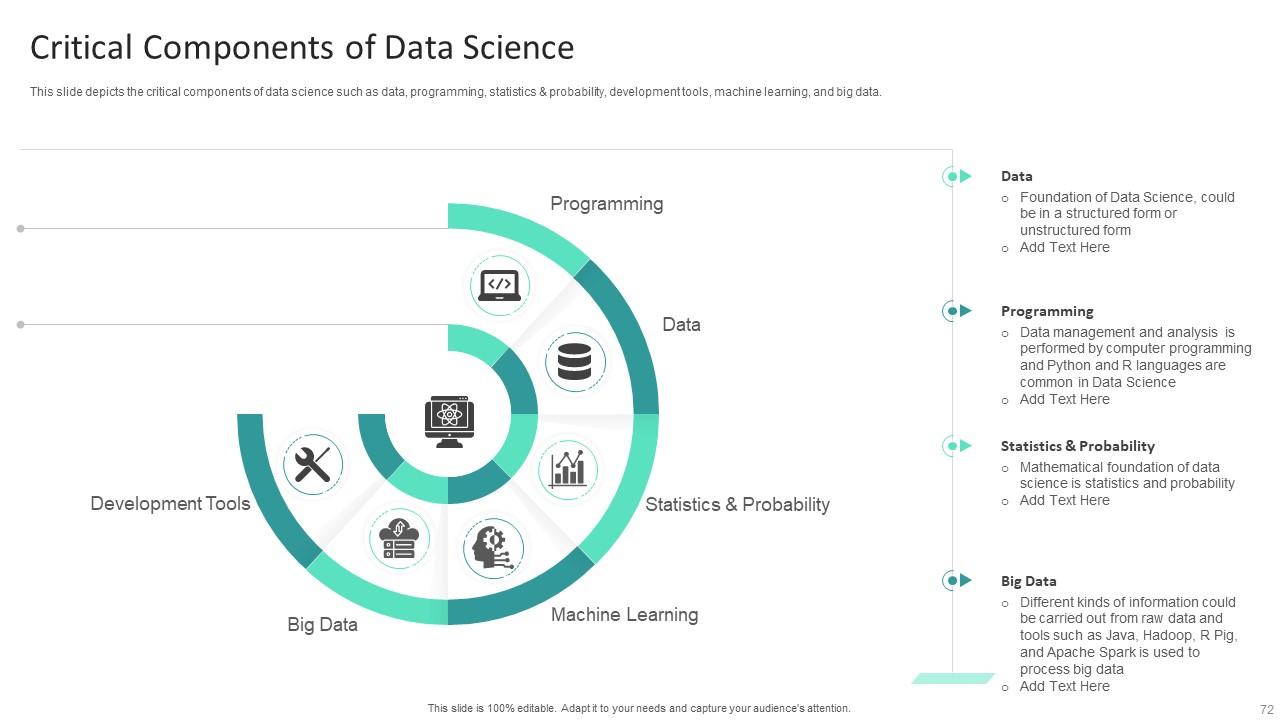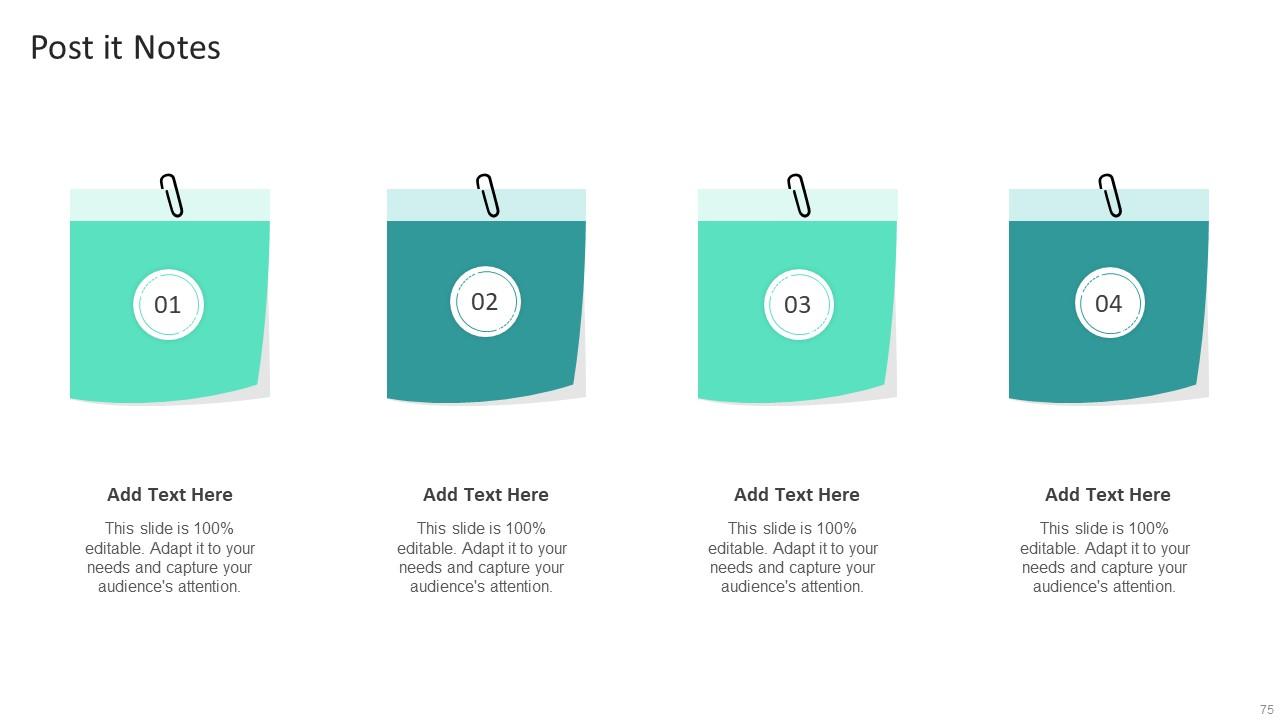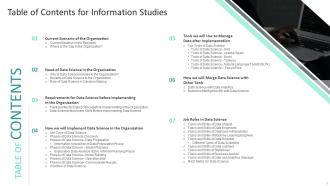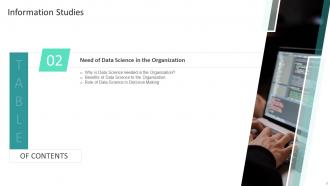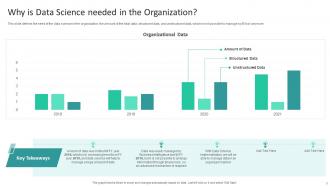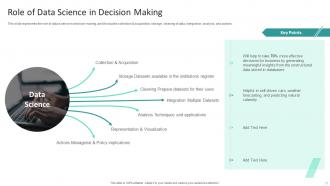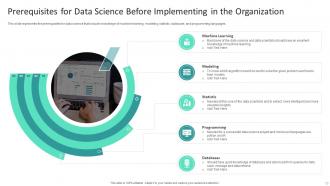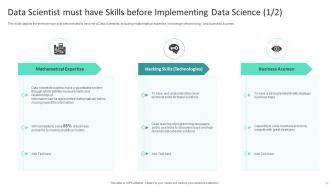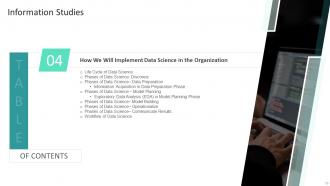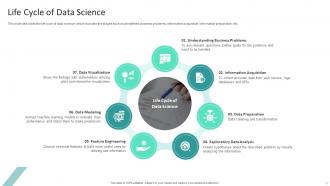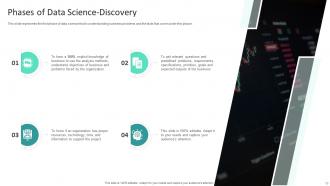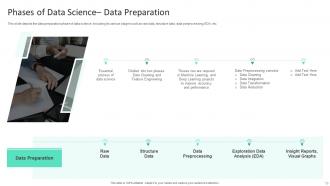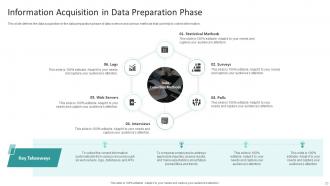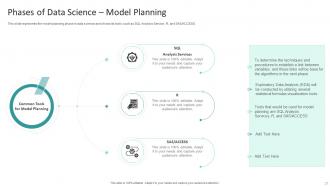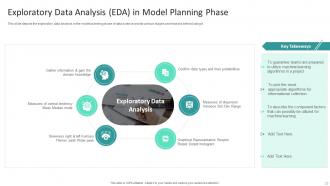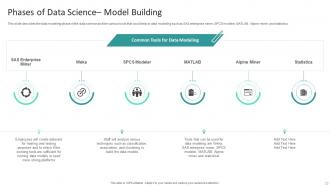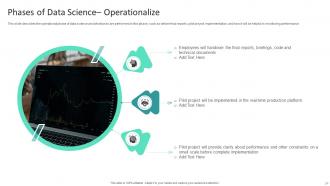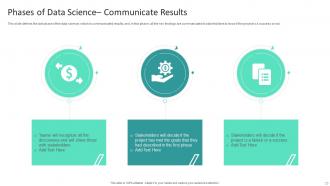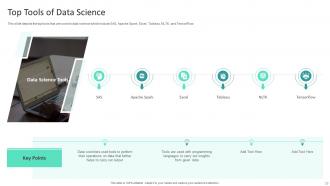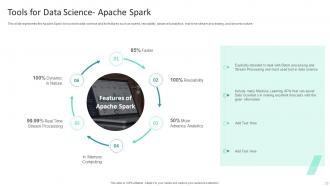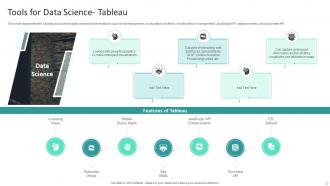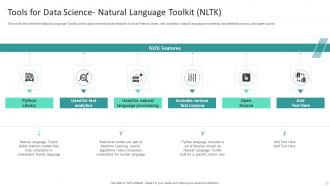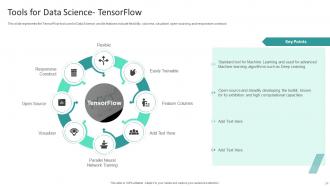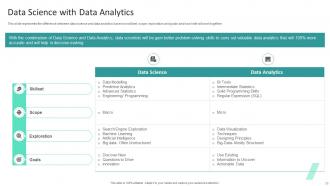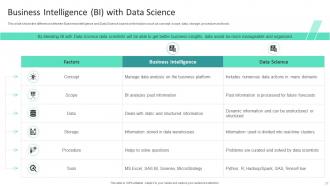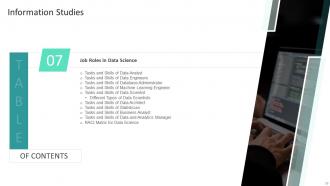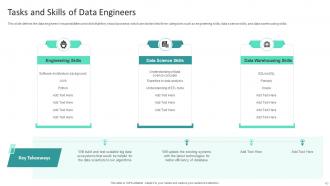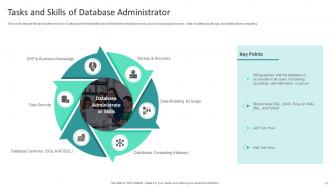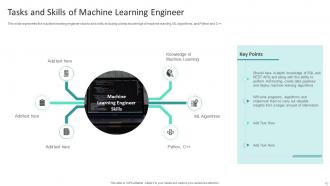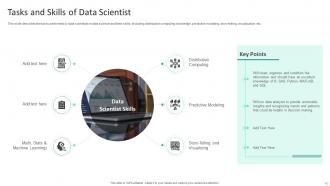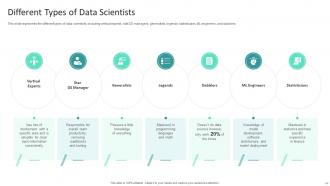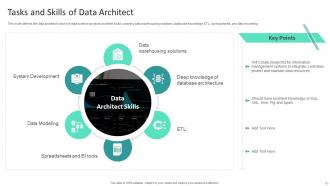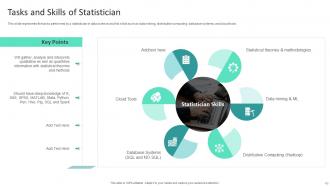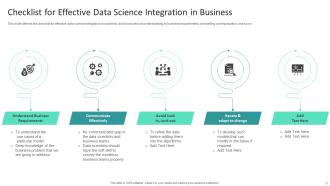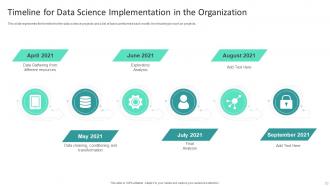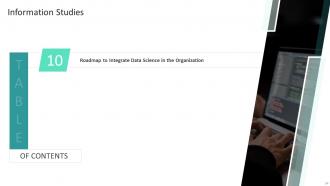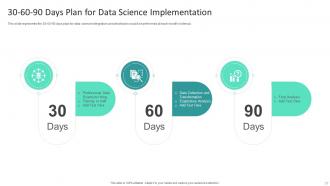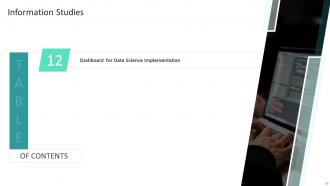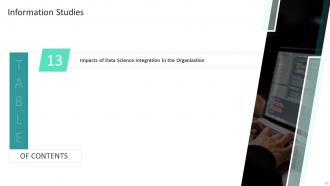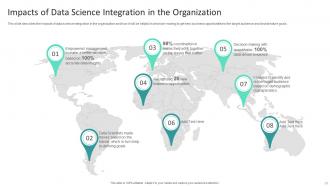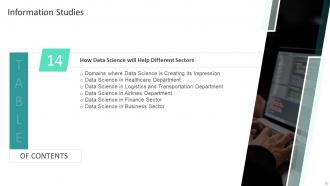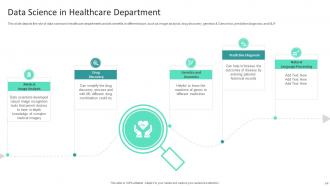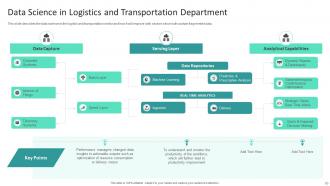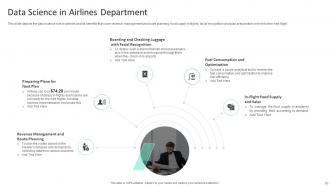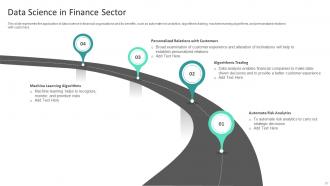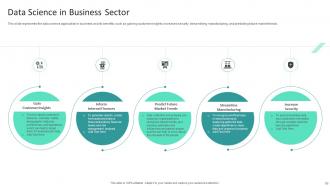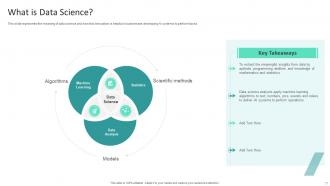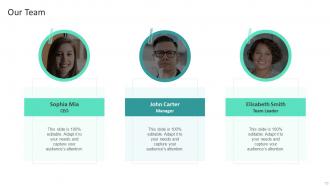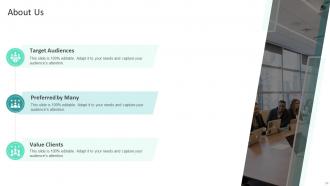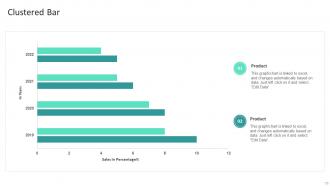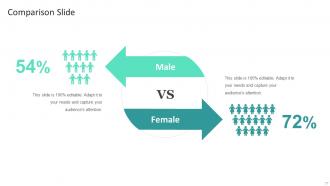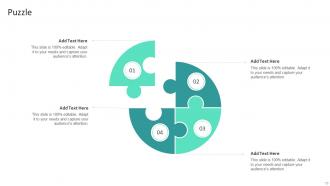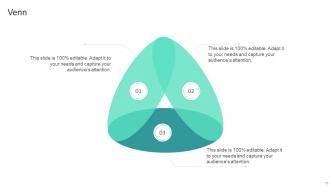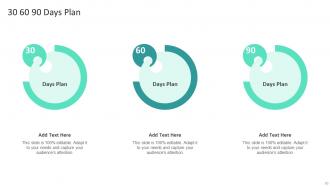Information Studies Powerpoint Presentation Slides
Information Studies is an area of study that combines domain experience, computer abilities, and mathematical and statistical understanding to extract valuable insights from data. Grab our insightfully designed Information Studies template that will be of great assistance for companies to present an overview of their current scenario and assess the need for data science adoption. Further, this data science module showcases the gap analysis of the company and the introduction of data science. In addition, it contains information on the requirements of the data science adoption, life cycle and phases of data science, and critical components of the data science. Furthermore, this data mining template includes the data science tools such as SAS, Apache Spark, Excel, Tableau, NLP, and TensorFlow, along with this role of data science in decision making. Moreover, this module highlights the difference between data science and other tools, data science workflow, job roles in data science, and top data science applications such as healthcare, logistic, finance, airlines, and business. Lastly, this template comprises a checklist, a timeline, a roadmap, a 30-60-90-day plan, a dashboard, and impacts of the data science integration on the organization. Get access to the template now.
You must be logged in to download this presentation.
 Impress your
Impress your audience
Editable
of Time
PowerPoint presentation slides
This complete deck covers various topics and highlights important concepts. It has PPT slides which cater to your business needs. This complete deck presentation emphasizes Information Studies Powerpoint Presentation Slides and has templates with professional background images and relevant content. This deck consists of total of eighty one slides. Our designers have created customizable templates, keeping your convenience in mind. You can edit the color, text and font size with ease. Not just this, you can also add or delete the content if needed. Get access to this fully editable complete presentation by clicking the download button below.
People who downloaded this PowerPoint presentation also viewed the following :
Content of this Powerpoint Presentation
Slide 1: This slide introduces Information Studies. State your company name and begin.
Slide 2: This slide states Agenda of the presentation.
Slide 3: This slide shows Table of Content for the presentation.
Slide 4: This is another slide continuing Table of Content for the presentation.
Slide 5: This slide highlights title for topics that are to be covered next in the template.
Slide 6: This slide presents current situation of our business by displaying the ratio of unstructured and structured data stored in the database.
Slide 7: This slide shows how unstructured data is causing challenges and how data science will help provide solutions.
Slide 8: This slide highlights title for topics that are to be covered next in the template.
Slide 9: This slide represents the need of the data science in the organization.
Slide 10: This slide shows Benefits of Data Science to the Organization.
Slide 11: This slide presents the role of data science in decision making, and it includes collection & acquisition, storage, cleaning of data, etc.
Slide 12: This slide highlights title for topics that are to be covered next in the template.
Slide 13: This slide displays the prerequisites for data science that include knowledge of machine learning, modeling, statistic, database, and programming languages.
Slide 14: This slide represents Data Scientist Must Have Skills Before Implementing Data Science.
Slide 15: This is another slide showing Data Scientist must have Skills before Implementing Data Science.
Slide 16: This slide highlights title for topics that are to be covered next in the template.
Slide 17: This slide describes the life cycle of data science, which includes the stages such as predefined business problems, information acquisition, etc.
Slide 18: This slide displays the first phase of data science that is understanding business problems and the facts that come under this phase.
Slide 19: This slide represents the data preparation phase of data science, including its various stages such as raw data, structure data, data preprocessing, EDA, etc.
Slide 20: This slide shows Information Acquisition in Data Preparation Phase.
Slide 21: This slide presents model planning phase in data science and shows its tools, such as SQL Analysis Service, R, and SAS/ACCESS.
Slide 22: This slide shows exploratory data analysis in the model planning phase of data science and its various stages and reasons.
Slide 23: This slide displays various tools that could help in data modeling such as SAS enterprise miner, SPCS modeler, MATLAB, etc.
Slide 24: This slide represents operational phase of data science and what tasks are performed in this phase.
Slide 25: This slide shows last phase of the data science and in this phase, all the key findings are communicated to stakeholders.
Slide 26: This slide presents how data scientists throughout the project manage data till completion.
Slide 27: This slide highlights title for topics that are to be covered next in the template.
Slide 28: This slide displays top tools that are used in data science which include SAS, Apache Spark, Excel, etc.
Slide 29: This slide represents Statistical Analysis System used in data science for data management and modeling.
Slide 30: This slide shows Apache Spark tool used in data science and its features such as speed, reusability, advanced analytics, etc.
Slide 31: This slide presents excel tool used in data science and its usage along with its features.
Slide 32: This slide shows tool used in data science and its features such as licensing views, subscription of others, etc.
Slide 33: This slide displays Tools for Data Science- Natural Language Toolkit (NLTK).
Slide 34: This slide represents TensorFlow tool used in Data Science, and its features include flexibility, columns, visualizer, etc.
Slide 35: This slide highlights title for topics that are to be covered next in the template.
Slide 36: This slide presents difference between data science and data analytics based on skillset, scope, exploration and goals.
Slide 37: This slide shows difference between Business Intelligence and Data Science based on the factors such as concept, scope, data, etc.
Slide 38: This slide highlights title for topics that are to be covered next in the template.
Slide 39: This slide represents tasks performed by the business analyst and how he will be helpful to improve business operations.
Slide 40: This slide shows data engineers’ responsibilities and skills that they should possess.
Slide 41: This slide presents tasks performed by a Database Administrator and skills that he should possess.
Slide 42: This slide shows machine learning engineer’s tasks and skills, including a deep knowledge of machine learning, ML algorithms, and Python and C++.
Slide 43: This slide displays the tasks performed by data scientists in data science and their skills.
Slide 44: This slide represents the different types of data scientists, including vertical experts, stat DS managers, generalists, etc.
Slide 45: This slide shows data architect’s tasks in data science projects and their skills.
Slide 46: This slide presents tasks performed by a statistician in data science and his skills such as data mining, distributive computing, etc.
Slide 47: This slide shows tasks performed by the business analyst and how he will be helpful to improve business operations.
Slide 48: This slide displays tasks performed by a data and analytics manager and skills he should have.
Slide 49: This slide represents RACI matrix for data science and tasks performed by data analysts, data engineers, data scientists, etc.
Slide 50: This slide highlights title for topics that are to be covered next in the template.
Slide 51: This slide presents Checklist for Effective Data Science Integration in Business.
Slide 52: This slide highlights title for topics that are to be covered next in the template.
Slide 53: This slide displays Table of Content highlighting Timeline for Data Science Implementation in the Organization.
Slide 54: This slide represents Table of Content highlighting Roadmap to Integrate Data Science in the Organization.
Slide 55: This slide shows Roadmap to Integrate Data Science in the Organization.
Slide 56: This slide presents Table of Content highlighting 30-60-90 Days Plan for Data Science Implementation.
Slide 57: This slide shows 30-60-90 Days Plan for Data Science Implementation.
Slide 58: This slide displays Dashboard for Data Science Implementation.
Slide 59: This slide represents dashboard for data integration in the business, and it is showing real-time details about expenses, profits, margins percentage, etc.
Slide 60: This slide shows Table of Content highlighting Impacts of Data Science Integration in the Organization.
Slide 61: This slide presents Impacts of Data Science Integration in the Organization.
Slide 62: This slide highlights title for topics that are to be covered next in the template.
Slide 63: This slide displays Domains where Data Science is Creating its Impression.
Slide 64: This slide represents data science in healthcare departments and its benefits in different ways.
Slide 65: This slide shows Data Science in Logistics and Transportation Department.
Slide 66: This slide presents data science role in airlines and its benefits that cover revenue management and route planning.
Slide 67: This slide shows application of data science in financial organizations and its benefits.
Slide 68: This slide displays the data science application in business and its benefits.
Slide 69: This slide contains all the icons used in this presentation.
Slide 70: This slide is titled as Additional Slides for moving forward.
Slide 71: This slide shows the meaning of data science and how this innovation is helpful in businesses developing AI systems.
Slide 72: This slide presents critical components of data science such as data, programming, statistics & probability, etc.
Slide 73: This is Our Team slide with names and designation.
Slide 74: This is About Us slide to show company specifications etc.
Slide 75: This slide shows Post It Notes. Post your important notes here.
Slide 76: This slide provides Clustered bar chart with two products comparison.
Slide 77: This is a Comparison slide to state comparison between commodities, entities etc.
Slide 78: This slide contains Puzzle with related icons and text.
Slide 79: This slide depicts Venn diagram with text boxes.
Slide 80: This slide provides 30 60 90 Days Plan with text boxes.
Slide 81: This is a Thank You slide with address, contact numbers and email address.
Information Studies Powerpoint Presentation Slides with all 86 slides:
Use our Information Studies Powerpoint Presentation Slides to effectively help you save your valuable time. They are readymade to fit into any presentation structure.
FAQs
The challenges caused by unstructured data include difficulty in processing and analyzing data, as well as problems with data quality and consistency. Data science can help to address these challenges by providing tools and techniques for data cleaning, transformation, and analysis.
Some of the prerequisites for data science include knowledge of machine learning, modeling, statistics, databases, and programming languages.
The different phases of the data science life cycle include understanding business problems, data preparation, model planning, operationalization, and communication of findings.
Some of the tools used in data science include SAS, Apache Spark, Excel, TensorFlow, and Natural Language Toolkit (NLTK).
The main differences between data science and data analytics are the scope of analysis and the skills required. Data science is a more comprehensive field that involves data exploration, modeling, and communication of findings, while data analytics typically focuses on data exploration and statistical analysis.
-
Nothing beats the well-formatted and professionally designed templates offered. Kudos to SlideTeam for their amazing collection of PPT slides.
-
“There is so much choice. At first, it seems like there isn't but you have to just keep looking, there are endless amounts to explore.”








